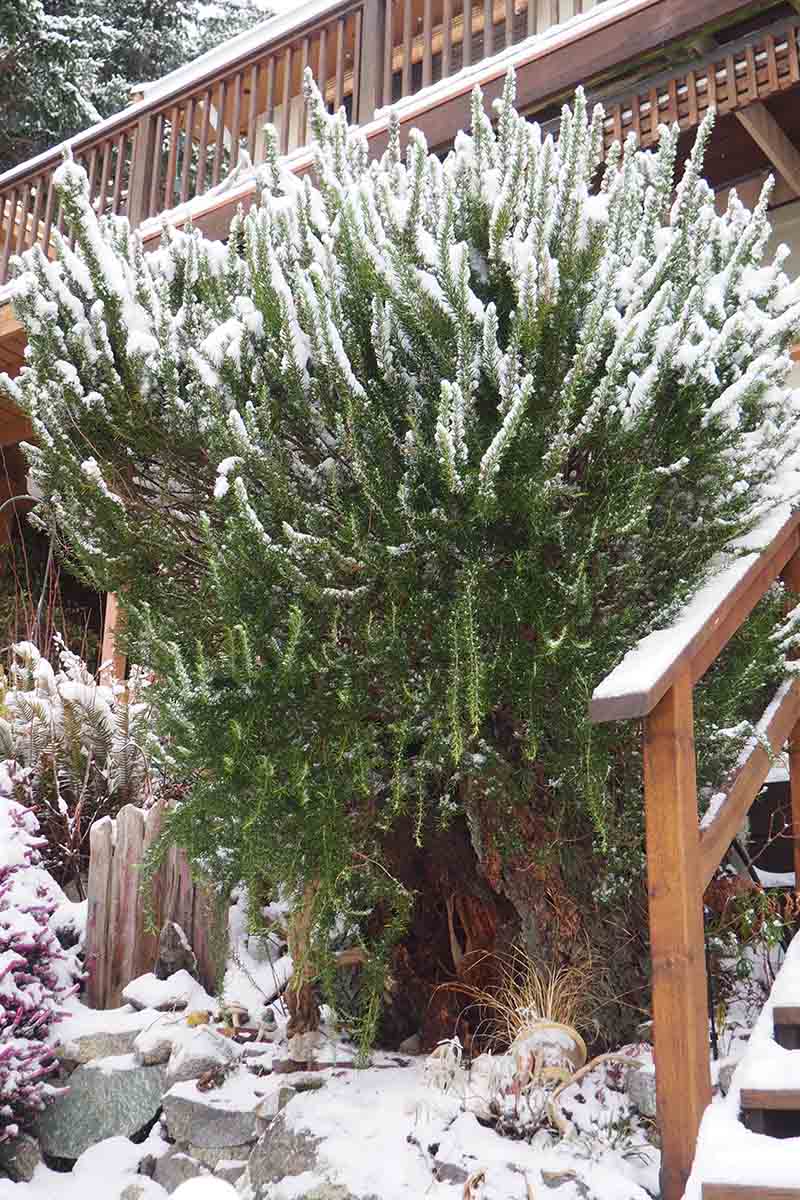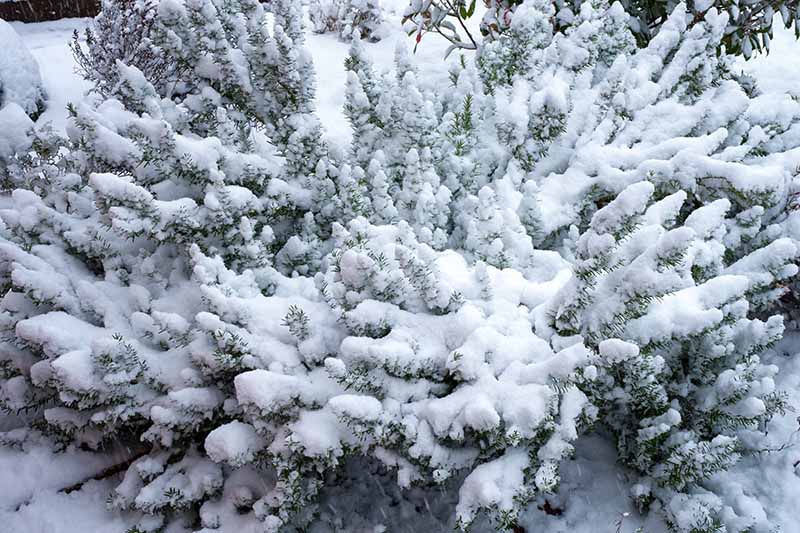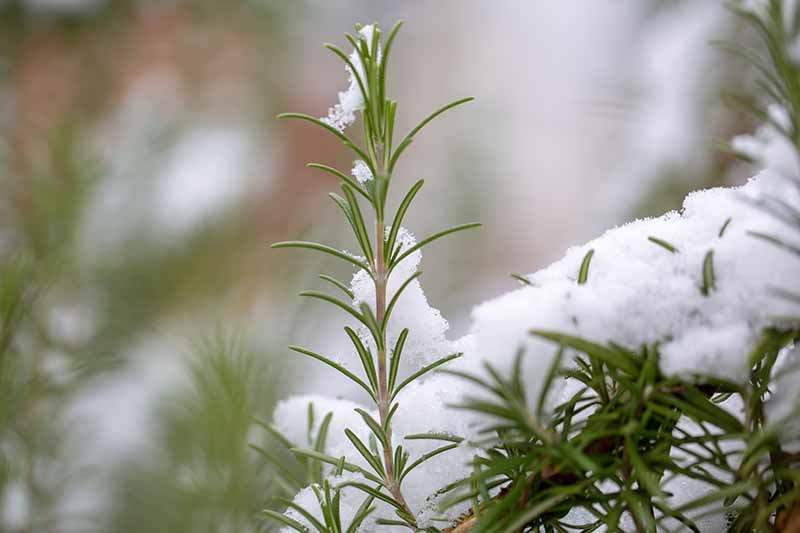While US gardeners who live in climates similar to that of the Mediterranean – one that’s warm and dry – are able to grow rosemary year-round, those in more northern climes may fear they are less fortunate. But no! We link to vendors to help you find relevant products. If you buy from one of our links, we may earn a commission. And while there are no varieties that are rated to consistently withstand the brutal chills of -10°F to -20°F temperatures that can occur in Zone 5 and below, with planning and preparation, gardeners in Zones 5, 6, and 7 have fairly solid odds of overwintering their plants. Let’s learn more about rosemary varieties that – with a little TLC – will do well in cooler areas. But first we’ll look at the best way to ensure success when growing rosemary in Zones 5-7. If you’d like to learn all there is to know about rosemary, check out our complete growing guide.
Tips for Growing Rosemary in Cold Weather
Before you even install your rosemary plants in the garden, give the process some consideration. The easiest way to ensure it survives the winter is to plant rosemary in a container, and overwinter it indoors. If your potful of rosemary has gotten a bit unwieldy, as rosemary is wont to do, you can certainly give it a bit of a haircut before you bring it inside. However, if your plant is already in the ground, and you’re thinking it might not make it through the winter chill, consider digging it up and replanting it in a container.
Before transplanting, you’ll want to trim it back. Plan to do this in late August or early September, and why not prepare some grilled rosemary-garlic hamburgers from our sister site Foodal the evening you do the trimming, so you can make use of all those flavorful cuttings. Read our full guide to protecting rosemary plants in winter here. If you’re set on a permanent outdoor planting, choose your site carefully. You’ll want a sunny, sheltered location, preferably near a building. Learn more about mulching to protect crops in winter here.
Best Cold Tolerant Cultivars to Choose
Most important to ensure overwintering success, of course, is selecting a plant variety that is especially well-suited to withstand cold temperatures. We’ve curated a few options for you:
1. Alcalde
This variety was originally found growing in a northern New Mexico garden and was brought into cultivation by Charles Martin, an agronomist. In its native habitat, it had withstood years of sub-zero winters at high elevations. ‘Alcalde’ produces pale blue flowers and wide, olive-green leaves. This upright type grows up to 30-36 inches tall and 24-26 inches wide.
2. Arp
Considered the most cold-tolerant rosemary variety, ‘Arp’ can withstand temperatures down to -10°F. It grows up to four feet tall and about as wide.
‘Arp’ The slim leaves are gray-green and the flowers are bright blue. You can prune this upright plant regularly to create a denser form, or to create a topiary. You can find the lemony-flavored ‘Arp’ variety available at Burpee.
3. Athens Blue Spire
Discovered in 1998 in a crop sown from a packet of commercial rosemary seeds by a horticulture researcher at the University of Georgia, this variety is still making its way to widespread availability. The researcher culled it for its vigor, cold hardiness, branching, and upright growth habit – it grows to about three feet tall and two feet wide. ‘Athens Blue Spire’ will survive temperatures ranging down to -5°F to -10°F.
4. Madalene Hill (Hill’s Hardy)
Named for a well-known and beloved herb expert, this variety is sometimes misspelled ‘Madeline’ or called ‘Hill’s Hardy.’ ‘Madalene Hill’ ‘Madalene Hill’ grows 36-40 inches tall, with an irregular, upright habit. It is hardy to 0°F. Bees love its nectar-rich, light blue springtime flowers. Its fragrant needles are dark green.
Safe Passage for a Tasty Plant
Rosemary’s distinctive flavor is so delicious that it’s no surprise gardeners in colder regions would be keen on overwintering their plants.
The keys to doing this are site selection, winter protection, and varietal selection. Choose a variety that is known to be cold hardy, and carefully place it where it will have the best chance against winter’s wrath. Plants overwintered outdoors should be protected from the elements with lots of mulch. Looking for rosemary growing tips? Check out these articles:
How to Propagate Rosemary Plants Tips for Growing Rosemary Indoors
Photos by Lorna Kring © Ask the Experts, LLC. ALL RIGHTS RESERVED. See our TOS for more details. Originally published on January 1, 2020. [lastupdated]. Product photos via Burpee and Hirt’s Gardens. Uncredited photos: Shutterstock. With additional writing and editing by Clare Groom.







